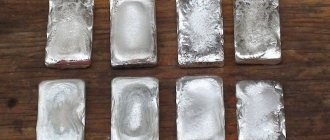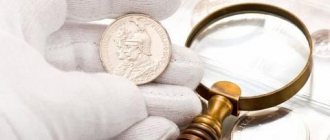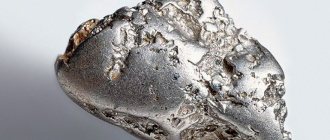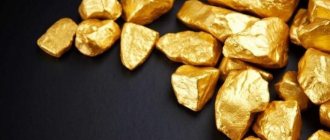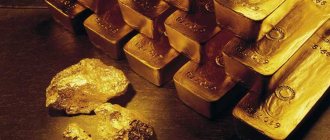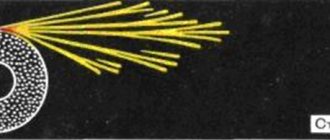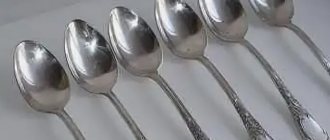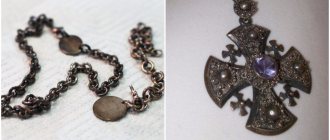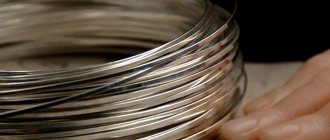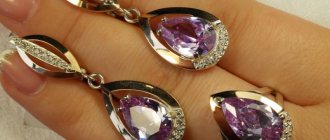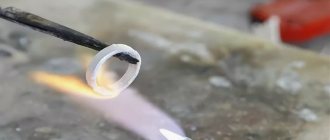March 3, 2022 Determining the authenticity of silver in today's realities is not such a meaningless procedure. Despite its apparent cheapness, the noble metal is counterfeited no less often than gold - low-grade alloys, or even stainless steel or tin, are sold under its guise. Most often, this is a “disease” of exotic oriental markets and flea markets, where deception of the buyer is common, but sometimes this occurs even in jewelry boutiques.
In this material, we will tell you in as much detail as possible how to distinguish real silver from a fake, without resorting to expensive laboratory examinations.
Silver and silver plating: how to distinguish
There are several signs that can be used to identify a fake with a high degree of accuracy. True, the basis is simple logic. Criteria to distinguish Ag from silver-plated jewelry:
- the presence of a stamp: on a fake coated with precious metal there will be no test, since too little Ag is used, but even if the stamp is still applied, its quality and shape are assessed, for example, sloppy embossing, incorrect contour geometry - these are signs handicraft production;
- quality of the coating: if the product has already been in use, damage remains on it (scratches, cracks, chips, etc.), a fake can be immediately distinguished - another metal will be visible under the coating, silver has a characteristic color - gray-white;
- rusting: Ag in combination with a ligature (as part of an alloy) is not subject to corrosion, while steel or other base metal may become covered with red spots, this indicates that a fake is being considered.
Sulfur ointment, nitric acid, whiteness
The principle of testing is the same as when testing with iodine. We apply a drop of the reagent to the product, wait and see if the product reacts to the drugs:
- A real silver item will show tarnish where the substances were applied.
- Nothing will happen on a fake.
Reaction to chemical exposure.
TOP 3 ways to determine technical silver without leaving home
Technical metal is called metal without additives. The maximum proportion of impurities is regulated - 0.01%. This type of silver is used to coat contacts and radio components during soldering. The main area of application is various industries.
Technical silver plates
Checking silver coins
A special approach is required to assess the quality of a coin. To test it, prepare a neodymium magnet. A souvenir from the refrigerator door will not work because it requires a powerful source of magnetic field. Its size must be at least 4x10 cm. The magnet is installed at an angle of 45°; for the purity of the experiment, it is necessary to check the accuracy of its location. It is known that Ag is not magnetic, but the presence of additives can be determined. A powerful magnet is used for this. When different types of materials are applied, different results are obtained:
- the product does not fall, which means it contains steel;
- slowly slides down - contains a significant proportion of copper;
- falls more rapidly, is weakly magnetic - contains nickel.
Silver coins
Checking old silver items
In earlier times, additives were practically not used or their quantities were less than today. Testing began relatively recently - several centuries ago, but the history of the use of precious metals goes back thousands of years. Given these features, only a jeweler can check whether an item is silver using the hydrostatic weighing method. The owner can use available means, but he is unlikely to be able to determine the quality of the precious metal.
How to tell if a tablespoon is silver or not
It is necessary to study the external signs of the object. A sample is placed on precious metals, but also on cutlery that is made from simple materials, the following markings are also found:
- cupronickel – MN (MELCH);
- aluminum - AL;
- stainless steel – STAINLESS;
- nickel silver – MNC.
Home methods are also used. They are relevant if there are no identifying marks on the product, but there are suspicions that the item is precious. When choosing a way to understand that a spoon is silver, one of the most effective is the method based on the use of ice. To test the precious metal, a piece is placed on a cutlery. If it melts quickly, it means the item is silver and valuable (Ag has the highest thermal conductivity).
Silver tablespoons
Thermal method
One of the properties of silver is thermal conductivity, due to which the metal quickly heats up to ambient temperature. If you hold the product in your hand, it will almost immediately heat up to body temperature. When immersed in cold or hot water, the metal will quickly return to the same temperature.
Boiling water is a good way to test the quality of a silver alloy. When removed from a hot product, it burns the skin and quickly cools to room temperature. Fake silver removed from boiling water will be lukewarm.
Metals – counterfeit silver
There are materials whose products are similar to silver. External examination does not provide the desired result. To identify a fake and check the quality of the material, pay attention to a number of features.
Aluminum
Not knowing how to distinguish silver from other metals, they study external signs:
- the fake aluminum chain links are not soldered;
- The fake is made using glue for inserts, and not the standard method of fastening - claws.
Jewelers claim that the glue is used by scammers or manufacturers who do not respect their customers.
Tin
The main way to recognize a fake jewelry is to compare the color of the fake and real jewelry; tin is characterized by a uniform gray tint; Ag is similar in tone, but you can additionally see dark spots on its surface. By the way, sulfur and compounds that contain it contribute to their appearance. Tin behaves differently in relation to this component - it forms a substance reminiscent of gold.
How to check in the store when purchasing
The store does not allow the use of any chemicals or improvised tools.
How can the seller verify the authenticity of the silver?
The analysis is carried out by appearance and hearing.
See if there is a dark mark left on the skin after prolonged rubbing. You can drop the decoration and listen to the sound (suitable for hollow structures). Before going to a dubious store, take a magnet with you and check whether the jewelry is magnetic. And, of course, look at the sample and stamp.
Information on the tag
All jewelry must be sold with tags. The exception is those to which it cannot be attached (piercing).
The label indicates all the characteristics of the product, including weight, dimensions, sample and material of manufacture.
If the material used is another silver-plated alloy, this must also be indicated on the tag.
Method for determining a sample at home
There are not always special devices or substances at hand. But some reagents are still available to the public, and not just to laboratory workers.
What is Chrompeak
Chrompic is a chemical often used by jewelers to evaluate the quality of an alloy. Prepared:
- gloves;
- pipette;
- sewing needle;
- tweezers.
Instructions that allow you to quickly recognize a fake or, conversely, verify the authenticity of an item:
- Notches are made on the product using a nail file.
- Chrompik is applied.
- Observe the reaction. If there is Ag in the material, the object will turn red. Other shades indicate counterfeit jewelry or the use of another precious metal.
Chrome pick for silver
Table: sample and color ratio
When using a homemade reagent, changes can be seen within 5-10 minutes. If you are wondering how to recognize silver, the relationship between the combination of alloy and the color of the alloy will help you figure it out:
| Hue | Metal |
| Rich brown | Brass |
| Yellow | Sn, Pb |
| Bluish | Ni |
| Green | Ag alloy fineness less than 800 |
| Brown | Metal 800 |
| Rich red | Popular sample 925 |
| Bright red | Pure Ag |
Iodine
A drop of iodine and the product being tested are required. Iodine reacts chemically with silver. The process is accompanied by darkening at the point of contact between iodine and silver. The mark from a reaction to iodine is very difficult to remove, so the method is not very good. It is better to conduct the experiment on the inside of the object.
Reaction of silver to iodine.
- A drop of iodine on real silver will leave a dark stain.
- Iodine does not react with other metals. The surface where iodine was applied will remain unchanged.
Iodine stains are difficult to remove! Be careful, check from the inside of the products.
At home, it is not possible to determine the sample and silver-plated products. Aluminum and copper blanks coated with a thin layer of silver are often found. Iodine will leave a mark on such products, but the silver content cannot be determined in this way.
Testing with iodine is one of the effective methods for identifying fake silver at home. The remaining methods are more suitable for self-soothing or are less accessible for self-checking.
Question-answer section
How can you tell if it is silver or not if the metal is too dark?
Expert opinion
Pribrezhny Gennady Valentinovich
Jeweler 6th category
It happens that Ag also darkens, which occurs under the influence of external factors. Then authenticity can only be determined using third-party substances. Apply iodine or nitric acid. In both cases, the real precious metal will darken even more.
Is silver magnetic or not?
Expert opinion
Andrey Seleznev
Chemist-technologist, Volgograd
Ag without additives does not exhibit magnetic properties and does not create a magnetic field. The precious metal will not react to the use of a magnet. Silver-based alloys behave differently. The larger the ligature, the more strongly the jewelry or other object is attracted.
How to check whether silver bought at a pawn shop is real if there is no hallmark?
Expert opinion
Grishanov Mikhail Petrovich
Jeweler, director of the Grishanov and Co. workshop
The absence of a sample is not always a sign of a fake. If the item has a characteristic color (white-gray with darkening), is quite heavy, and also reacts to acids with the appearance of black spots, there is a possibility that the item is precious. A jeweler can say more precisely.
Magnet
You can check silver at home without any marks on the metal. A regular magnet is used for this. The reaction to the magnet will indicate a fake:
Magnetic testing - detection of gross fakes.
- A product made of real silver does not attach to a magnet.
- Fake ferrous metals will stick to the magnet.
Do not check chain locks with a magnet. The locks have a mechanism that responds to a magnet.
The method is very popular, but not very accurate; non-ferrous metals do not always react to a magnet.
Density
The longest and most difficult way to distinguish the two metals in question is to determine their specific density. This is only applicable for small products, as well as for those that have a regular geometric shape. The bottom line is that you first need to calculate the volume of the sample under study, and then, using a simple formula, find out its specific gravity.
The result obtained is ultimately compared with fixed density values. For aluminum this figure is about 2.6 g/cm3, while stainless steel is almost three times denser - from 7.6 to 8.1 g/cm3.
- Non-ferrous metals
- Copper
- Brass
- Aluminum
- Lead
- battery
- Scrap electric motors
- Black metals
- Stainless steel
- Scrap steel
- Cast iron
- 3A size
